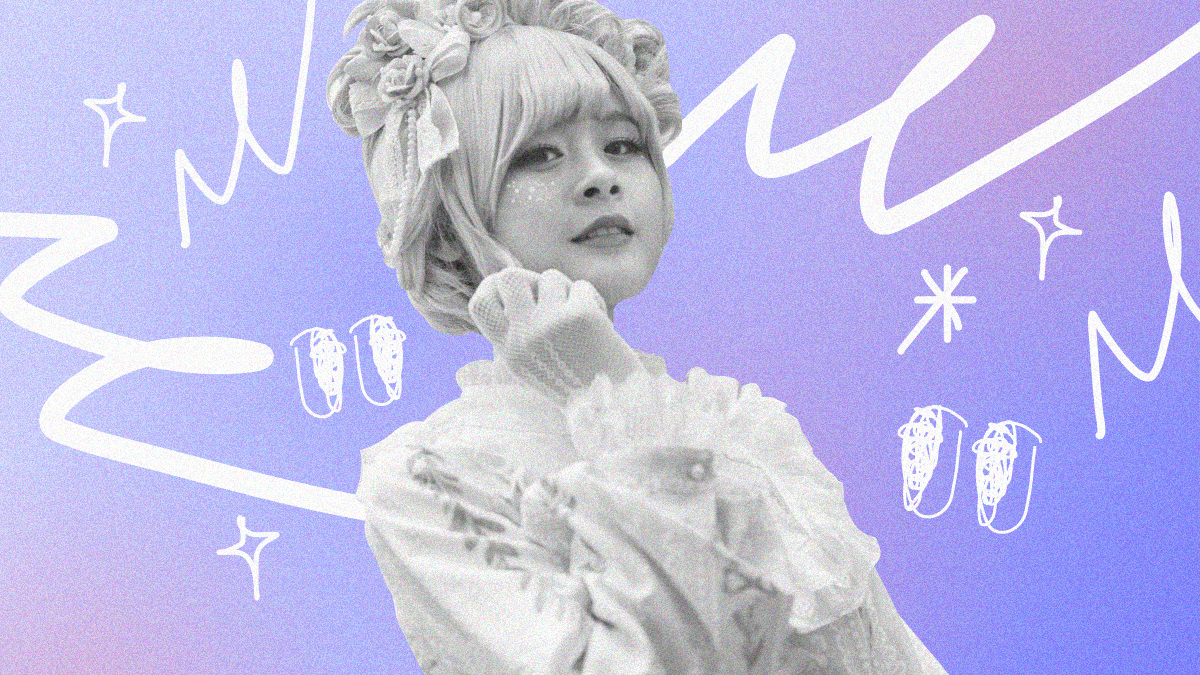Subcultures have come a long way from its rebellious, youth-centric past. Some subcultures went on to claim the limelight in teen movies throughout the 80s and 90s, like The Breakfast Club and Dazed and Confused.
Now, subcultures exist in the form of online communities, websites, and viral TikTok aesthetics, like dark academia and cottagecore. The migration of subcultures to the digital space collapses initial physical constraints. One doesn’t always need to be a specific age and from a specific neighborhood, city, or country to be emo or cottage core or scene. Many try on different subcultures by scrolling through online content and partaking in dance trends.
The Internet made belonging accessible to everyone. The rise of online avatars let us fragment and curate our identities to fit the spaces we inhabit more tightly without sacrificing our other interests. Yet, the abundance of options for different identities makes committing to one and making meaning there all the more difficult. We can’t truly reap the benefits of belonging with one foot in and one foot out the door. If everyone belongs then no one really does. And the subcultures of today need to adapt to that shift.
Initiation Rituals
While anyone online can easily access information about certain communities through subreddits, Discord servers, and YouTube channels, understanding the context behind the information is tricky.
During my most recent foray into a new subculture, Pokémon video game championships (VGC to those in the know), I didn’t understand any of the memes or the terminology. I relied on YouTubers and podcasters to explain why this specific Pokémon (eg. Pachirisu) became a meme. Despite knowing the mechanics of competitive Pokemon battles (doubles only) and the type match-up chart (always have at least one STAB move), I still couldn’t get the inside jokes about certain battles and popular figures. I wasn’t initiated into this group just yet.

Phrases like “iykyk” and “I don’t gatekeep” gained traction on short-form video content meant to advertise tips and tricks known by insiders of a group. I’ve seen this trend extend across different spheres of the Internet, from finance to beauty to tech. The recent popularity of these terms highlights our need to differentiate between insiders and outsiders. In order to be an insider in a community or culture, one needs to cross over the point of no return. Amid the wealth of easy-to-access information today, how do subcultures and groups determine that threshold?
We’ve seen a possible solution in teen movies, video games, and even church. Initiation rites, like baptism and circumcision for some religious groups, mark an evolution in one’s identity by making tangible personal changes through symbols and communal gatherings.
Romanian philosopher, historian, and academic Mircea Eliade writes of initiation rituals, especially those during puberty: “Initiation introduces the candidate into the human community and into the world of spiritual and cultural values.” The communal aspect of initiation rites binds an individual to the company they’re entering, while the ritualistic and spiritual characteristics signal a profound change in the initiated. These qualities together create shared experiences across all of those who have gone through the initiation process. An initiation ritual signals the first of many shared experiences found in a community or culture.
While I went down the rabbit hole of Pokémon VGC content, my interest in Pokemon VGC will — for the foreseeable future — remain an interest. I never battled Pokémon competitively. The last time I purchased a Pokémon game was eight years ago. I didn’t even try to initiate myself into the community. Buying the latest Pokemon game would be a great first step, but I couldn’t bring myself to pay for the game and spend hours learning about new game mechanics. My reluctance to move beyond content consumption for Pokémon VGC reveals how non-committal attitude towards the community.
Initiation practices create similar experiences that bind members of a subculture together. They symbolize the beginning of a new phase in one’s identity, as Eliade noted. And, perhaps more importantly, they also uncover who isn’t in the subculture for the long haul.
The Internet Enables Invisibility
The Internet made culture accessible by dismantling geographic and demographic barriers through instant communication and connectivity. Online communities, like Tumblr, Reddit, Discord, and Facebook Groups, ensure the longevity of subcultures. However, this democratization is a double-edged sword. If everyone and anyone could flit in and out of subcultures, then that would make it hard for members to identify those committed to the community. And, with the lack of corporeal presences online, we could easily switch up our cultural loyalties with a click of a button.
Tumblr, Reddit, and Discord are social media platforms at the forefront of subculture on the Internet. What sets them apart from other interest and community groups, like Facebook, is the option for users to make anonymous accounts. This feature enables users to form online identities separate from their IRL ones, much like digital avatars (which I wrote about in a previous Zero Percent Sugar essay).

According to former Head of Content and Insights at Tumblr, Amanda Brennan, the option for anonymity lets Tumblr users express different facets of themselves and pursue their passions freely. Brennan notes, “But if you are a forty-five year-old mom and you don’t want people to know how much you love Supernatural, you can be that person here and own your fangirlness as part of the community.” Since members of a subculture don’t need to convene IRL to participate in norms and activities, they don’t need to take on the load of using a subculture’s physical markers, like style and appearance. In a way, identifying a member of a subculture in public would be harder.
This non-committal attitude towards embodying an ethos of a subculture also manifests in the other side of the spectrum: total commitment towards a style, with little longevity in practicing cultural norms. The official Internet term for this phenomenon is “aesthetics.”
Cultural commentator and YouTube Mina Le, also known as gremlita, discusses the rise of aesthetics in her video essay let’s talk about the rise of ‘-core’ and ‘-girl’ aesthetics. Aesthetics, allow people to try on different styles and identities without always embodying the philosophy of said culture. Le uses the health goth subculture as an example of a subculture whose trademark dark athleisure was adopted by mainstream media and fashion retailers without the anti-capitalist sentiment behind them. Le also notes that the art hoe aesthetic started out as a space for underrepresented artists of color to an aesthetic focused on pricey Fjallraven backpacks and Caran d’Ache watercolors. Aesthetics often flatten subcultures by removing common norms, shared philosophies, and even the original members of the group.
The End of Monoculture
The path ahead for subcultures appears contradictory. On one hand, existing members of a subculture could identify between insiders and outsiders by uncovering shared experiences. Phrases like “iykyk” and “gatekeep” allude to the role initiation rituals play in maintaining these groups. On the other hand, Internet anonymity allows anyone, regardless of their geographic and demographic associations to partake in the explosion subculture activity on sites like Discord, Tumblr, and Reddit. The extreme ways subcultures show up today are fraught and confusing, but, for me, converge into the same outcome: the death of a singular, mainstream culture.

The most prescient artifact of a monoculture I could come up with is the Marvel Cinematic Universe. The franchise spans decades, starting from the first Iron Man movie in 2008 to this year’s The Marvels. When a new MCU film came out, I’d flock to the theater with family and friends on opening weekend. I endured almost three hours of 2019’s Avengers: Endgame during college midterm season. I’m not a big film buff, but I carved out time in my study schedule to watch a movie, then that movie must have had some weight. Avengers: Endgame went on to gross $357 million on opening weekend. However, The Marvels commanded no such time and attention, grossing $47 million on opening weekend — the lowest of any Marvel film to date.
Meanwhile, as the MCU falls, we see the rise of indie film darlings, like A24, whose theatrical and streaming releases dominate the awards circuit and pop culture conversation. What’s so impressive about A24 is its genre-defying repertoire. The production company has horror (Pearl, Midsommar), sci-fi (Everything Everywhere All At Once), and even more quiet and meditative films (Moonlight, Causeway).
Unlike Marvel’s superhero behemoth, A24 takes on the opposite approach by producing plenty of niche, smaller-budget films for different audiences. Their success indicates that smaller, fragmented groups (subcultures) are the path forward for the 2020s and beyond. In her reflection on subculture in Vogue, writer Yomi Adegoke states, “Subcultures” are no longer the preserve of the countercultural – they are culture.”


